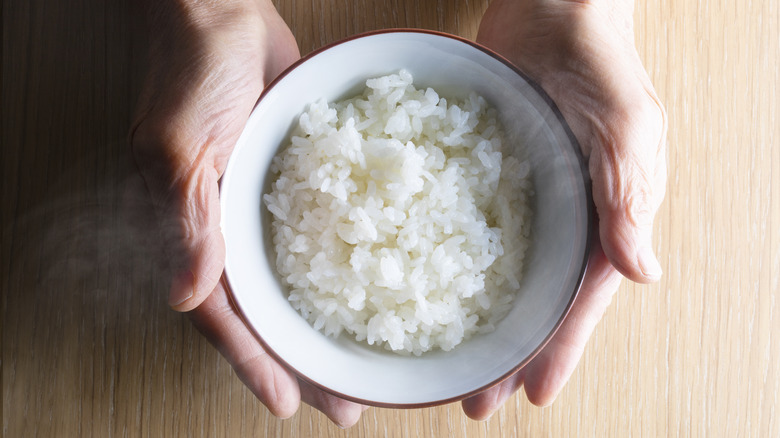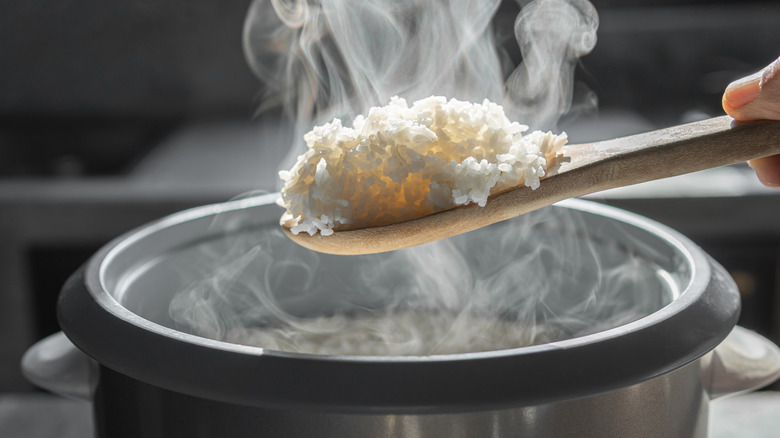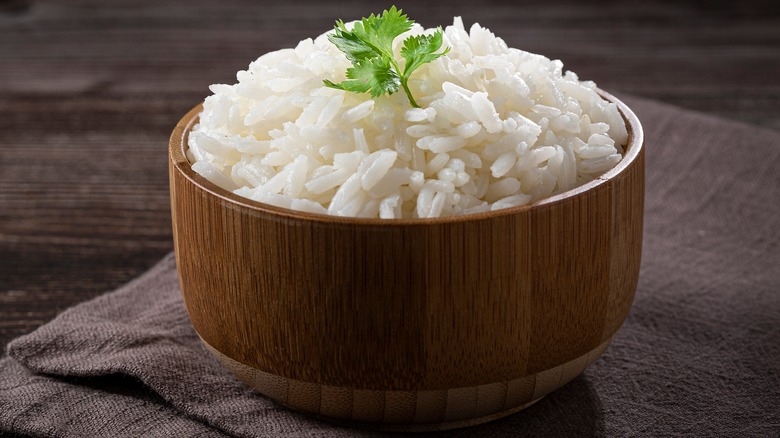The Fingertip Trick You Should Know For Perfectly-Cooked Rice
The world loves its rice. It's more than just popular; it's fundamental to the eating habits of people across the planet. While we all have our own approach to seasoning rice, there are a few cooking techniques that have become common across cultures — including the fingertip trick. No matter where you are, or how you prefer to eat this particular grain, this method can help you balance the initial rice-to-water ratio to achieve the perfect texture for your next meal.
Known to some as the knuckle method, all you need to do is take a pot, fill it with the number of rice servings you plan to cook, and then gently shake it to level out the layer of grains before placing the pot under your faucet. Position your finger on top of the rice, and fill the pot with water until it reaches the line of your first knuckle. Then, proceed to cook the rice as you normally would.
Why the fingertip trick works
The general advice for the optimal rice-to-water ratio is one-to-one by volume (that is, to cook one cup of rice, use one cup of water). In contrast, the fingertip trick might appear less precise. If you're curious whether this technique varies with hand size, the answer is no — the length of an adult's knuckles is relatively standard, regardless of how small or large the hand is, making this method of measurement pretty reliable.
Moreover, this trick proves effective for nearly all types of rice, from short-grain to long-grain varieties, including both white and brown rice. The reason it works so well is because it helps regulate the amount of water used for cooking the rice, which ultimately influences the texture of each grain. Too much water results in a mushy, wet meal; too little, and you'll end up with hardened grains stuck to the bottom of your pot.
Two key actions occur when you combine rice and water in a pot over heat: evaporation and absorption. As the water heats to boiling, some evaporates into the air, while the rice absorbs the remainder. This process triggers two additional reactions: gelatinization and pasting. When the ideal amount of water is used, the starch in the rice softens and begins to break down, resulting in a perfectly fluffy and slightly sticky bowl of rice.
Other tips for the best bowl of rice
The fingertip trick is an easy start to mastering the simple art of making rice, but there are many more ways to continue improving. For example, once you understand the philosophy behind this method, you can begin to see why stirring rice is a one-way ticket to disappointing texture. Unlike risotto, which should be consistently stirred to create its crave-worthy creaminess, plain rice should be left alone while it cooks to prevent the starches from breaking down too quickly and becoming soggy.
For optimal texture, you can also try the lemon juice hack, which makes rice bright and fluffy by preventing the grains from clumping together. Despite the versatility of the fingertip trick, you'll also want to make sure to avoid the cooking assumption that's ruining your brown rice. While white rice has been polished, removing the tough outer layer of bran, brown rice is a whole grain and, therefore, requires a longer cooking time.



